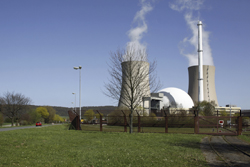Ensuring the integrity of high-pressure containment vessels
Interconnecting pipelines and containers must often withstand severe temperatures and pressures and are prone to in-service failure resulting from degradation. Their malfunction can have catastrophic effects on human safety, the economy and the environment yet there is still a lack of reliable and cost-efficient non-destructive testing (NDT) methods to assess their integrity. The EU-funded project 'High energy digital radiography' (HEDRAD)(opens in new window) developed digital computed radiography (CR) technology for the examination of large-scale, thick-section components to detect in-service defects. CR is fast and efficient compared to standard film radiography or ultrasonic testing. In addition, lower radiation doses compared to conventional X-ray techniques lead to sharper images and decreased exposure of personnel. However, application of CR to heavy wall components has been constrained by the inability of CR detectors to operate at the radiation levels required for such large pieces. Scientists employed novel phosphor image plate (IP) detectors, X-ray area detectors preferable to X-ray film in many ways and increasingly used in medical imaging and crystallography. The photo-stimulable phosphor temporarily stores the image that can be read out with a laser scanning system and then erased. IP detectors have all the necessary attributes of an NDT X-ray system for large volumetric assessment, including wide dynamic range, high spatial resolution and large active area size. A CR scanner was modified for mobility and on-site inspection. Scientists designed and manufactured a multi-plate cassette holder to be used with a multi-IP–exposure technique enabling the averaging of several images to increase the signal-to-noise ratio. Novel data fusion software combined the images. Numerous International Organization for Standardization (ISO) standards on digital radiography were submitted during the course of the project. The HEDRAD system demonstrated compliance with ISO standards for defect detection, image quality and functional testing with a 60 % reduction in exposure time compared with conventional film radiography. Commercialisation of HEDRAD results promises to ensure the safe operation of numerous plants involved in the production and transport of energy resources, including oil, gas and nuclear. Given the potentially grave environmental and human consequences of failures of large vessels under pressure, scientists have made a significant contribution to NDT.







